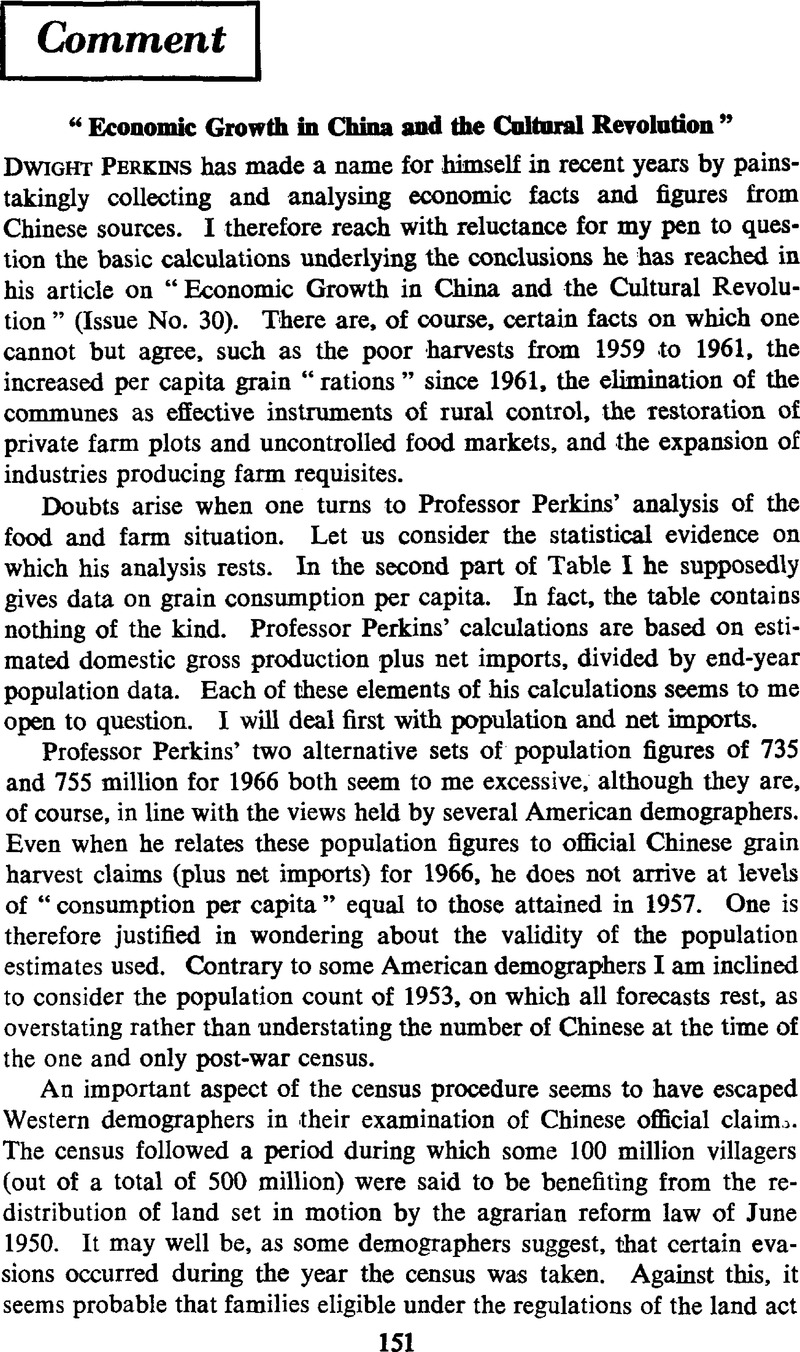No CrossRef data available.
Article contents
“Economic Growth in China and the Cultural Revolution”
Published online by Cambridge University Press: 17 February 2009
Abstract

- Type
- Comment
- Information
- Copyright
- Copyright © The China Quarterly 1967
References
1 Because seed and industrial uses tend to be fairly constant in absolute terms, there will be a slightly larger percentage of the harvest left over for consumption at higher levels of output, but the effect of this factor is minor compared to that of feed which works in the opposite direction.
2 Dr. Klatt uses different calorie figures per kilogram of potatoes in his 1960–61 and 1966–67 estimates which give a slight but insignificant upward bias to his 1960–61 figure.
3 Dr. Klatt estimates wheat output to be 20 million tons to which he adds his 9 million ton import figure. Subtracting seed, waste and processing losses he arrives at a figure of 21 million tons which is 72 per cent. of 29. 72 per cent. of 9 million tons gives a figure of 6·5 million tons. Imports apparently had no waste and gained weight after being processed into flour?
4 Actually, in absolute terms, the rise between 1960–61 and 1966–67 is not as great according to Klatt's figures as he implies in his comment. Net grain available for consumption, according to his own estimates, was 105 million tons in 1960–61 and 119 million tons in 1966–67, not 100 and 147 million tons as he says in his paper (where he seems to be comparing gross with net).
5 What evidence I have seen suggests that the potato content of the diet has declined since 1960–61, not increased, but Klatt's estimates show an opposite trend.
6 Estimates appearing in Current Scene place domestic output in 1966 at 5 million tons and imports at 3·5 million tons which converted into nutrient are 1·7 million tons or about 15 kilos per hectare. In per hectare terms, this amount is almost 7 times the level in India and 40 per cent. of the level in the U.S. (both figures are for 1960). (For source, see footnote 8.)
7 For an estimate of the amount used on cotton, the main cash crop, see Dawson, O. L., ”China's Cotton Outlook,” The China Mainland Review, 12 1966Google Scholar.
8 For a discussion of yield response to fertiliser in China, see Liu, Jung-chao, ”Fertiliser Application in Communist China,” The China Quarterly, No. 24 (10–12 1965)CrossRefGoogle Scholar, ”Fertiliser Supply and Grain Production in Communist China,” Journal of Farm Economics, November 1965.




